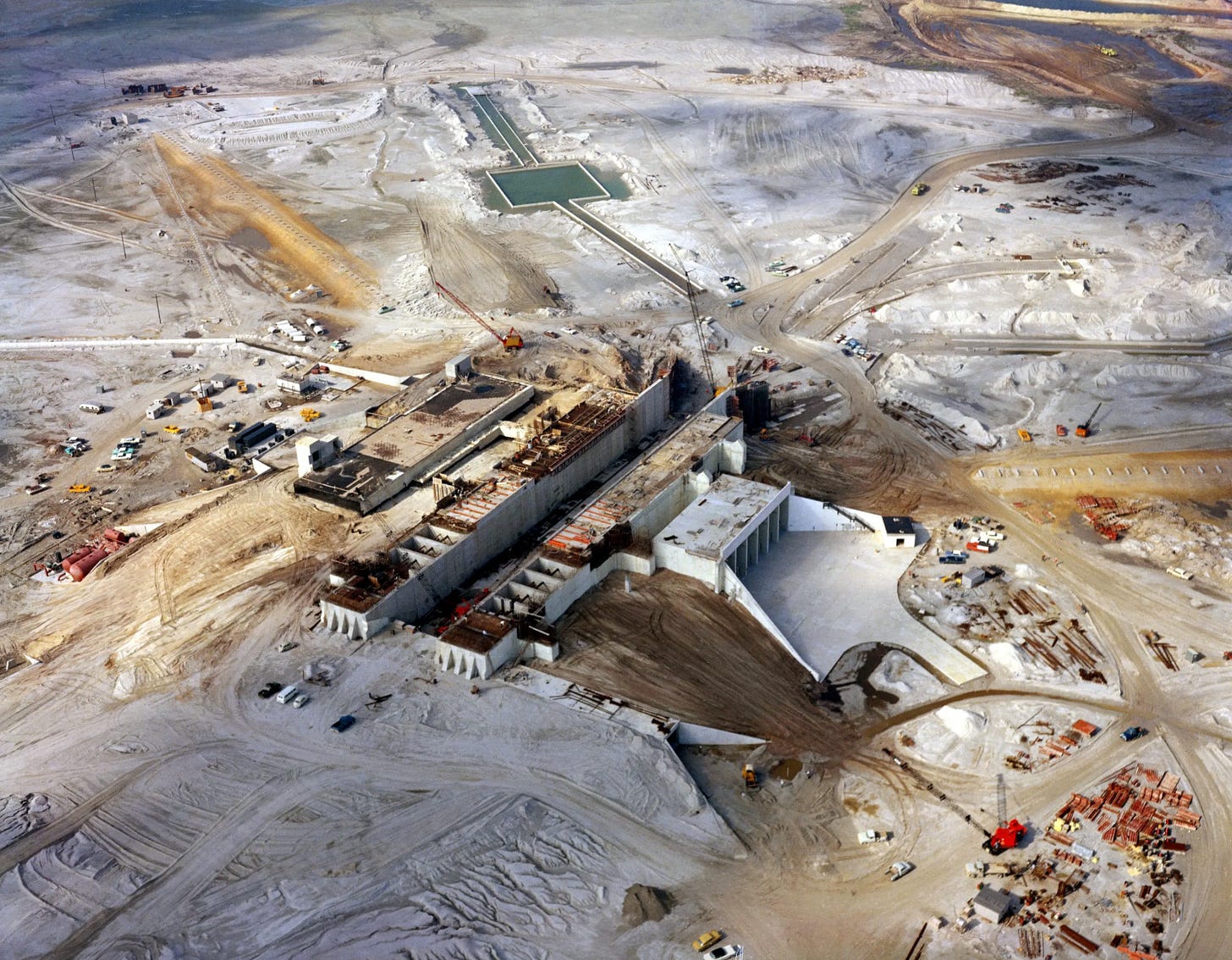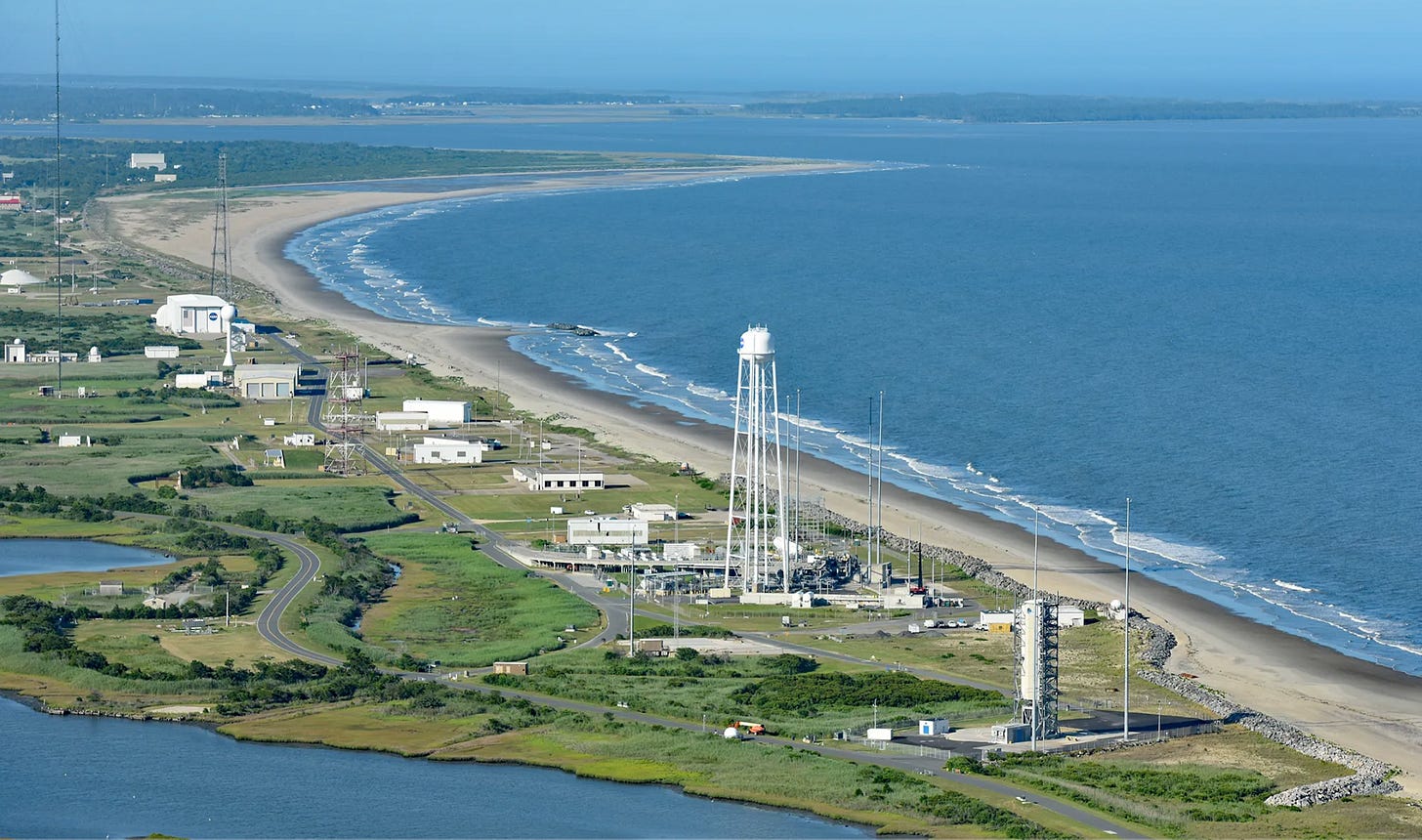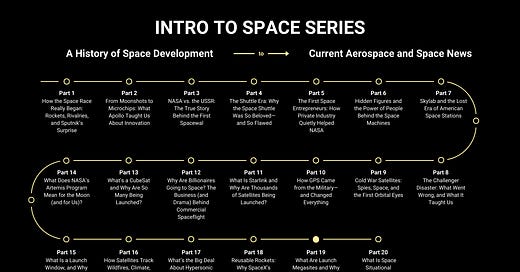Part 19 | What Are Launch Megasites and Why Are States Fighting for Them?
From Texas to Florida, states are competing for launch pads. This post covers why launch facilities are big business, what makes a good site, and how they affect local economies.
Rockets, Revenue, and Real Estate: Inside the Gold Rush for Launch Megasites
From Cape Canaveral to Kodiak, states across the U.S. are racing—not to the stars, but to be the place rockets lift off from them. Welcome to the age of the launch megasite: massive, government- or privately-backed facilities where space companies can stage, launch, and recover rockets in rapid succession.
Why are these megasites suddenly such a big deal?
Because as demand for launch capacity skyrockets—fueled by everything from Starlink to national defense—states and private stakeholders see infrastructure as the next frontier of the space race.
In this post, we’ll break down what a launch megasite is, why states and nations are fighting to build and host them, and how they’re reshaping local economies, federal funding, and aerospace strategy.

What Is a Launch Megasite?
Think of a launch megasite as an airport for rockets—but with vastly more complex infrastructure, environmental impact, and security demands.
A true launch megasite typically includes:
Multiple launch pads for different payload classes
Integration and payload processing facilities
Fueling systems, cryogenic storage, and safety infrastructure
Range control and tracking capabilities
Recovery zones or drone ship coordination for reusable stages
Nearby manufacturing or test facilities to streamline operations
These aren’t isolated pads in the desert—they're full-stack industrial zones designed for high-cadence, scalable space operations.

Why States Are Competing to Host Them
1. Economic Impact
A single launch site can bring hundreds of high-paying aerospace jobs, millions in annual tourism, and even housing booms.
2. National Security Footprint
States like Texas and Florida see hosting defense launches as a way to influence federal defense investment, especially in dual-use technologies.
3. Strategic Leverage
Hosting a spaceport gives states a seat at the table when it comes to:
Defense contracts
Federal R&D grants
International launch agreements
4. Future-Proofing
From hypersonic testing to lunar cargo missions, future aerospace ambitions require permanent ground infrastructure.
It’s not just about rockets—it’s about real estate, workforce, and political capital.

Who Are the Major Players?
1. Cape Canaveral Space Force Station / Kennedy Space Center (Florida)
The original spaceport. Still the most active and capable in the U.S.
Used by: NASA, SpaceX, ULA, Blue Origin
Strengths: Infrastructure, Atlantic Ocean access, veteran workforce
Challenges: Airspace congestion, federal regulations, legacy systems
2. Starbase (Boca Chica, Texas)
SpaceX’s private megasite.
Used by: SpaceX (Starship program)
Strengths: Owned/controlled by one entity, rapid iteration
Challenges: Environmental battles, noise concerns, permitting
3. Wallops Flight Facility (Virginia)
Rising star for small- and medium-class launches.
Used by: Northrop Grumman, Rocket Lab
Strengths: Polar and ISS access, federal backing
Challenges: Limited public visibility
4. Pacific Spaceport Complex (Kodiak, Alaska)
Specializes in defense-related and polar orbit launches.
Used by: Astra, U.S. military programs
Strengths: Remote, secure, minimal population risk
Challenges: Harsh weather, logistics
5. Vandenberg Space Force Base (California)
West Coast workhorse for polar launches.
Used by: ULA, SpaceX, the Department of Defense
Strengths: Heavy-class launch capability, defense proximity
Challenges: High operational costs, federal red tape
Every site brings trade-offs between geography, political will, and operational cadence.

The Economic Stakes
Hosting a launch megasite can generate:
$250M–$500M in annual economic activity
300–1,000 direct jobs, many paying over $100K
Tourism and STEM education boosts
Property value spikes in surrounding areas
Example: SpaceX’s South Texas Starbase has drawn hotel chains, private developers, and high-speed infrastructure investment. Brownsville is positioning itself as a "space city" of the future.
State incentives often include:
Tax breaks
Fast-track permitting
Infrastructure grants
University partnerships
For local governments, it’s a once-in-a-generation investment with long-term returns—if they win.

Global Competition: U.S. vs. the World
The U.S. isn’t alone. Globally, there’s a push to build sovereign launch capabilities:
UK: Spaceport Cornwall, Sutherland
Australia: Arnhem Space Centre (NT), Southern Launch
India: Sriharikota expansion
Japan: Tanegashima and Hokkaido commercial developments
The strategic logic? In a world of potential launch bottlenecks, having domestic access to orbit is as valuable as oil pipelines once were.
For defense applications—particularly in LEO and hypersonic systems—launch independence = strategic autonomy.
What It Means for Aerospace & Defense Professionals
1. New Business Opportunities
Construction firms, logistics companies, security providers
Aerospace engineers in ground systems and telemetry
Universities competing for applied research grants
2. Workforce Demands
Specialized technicians, range safety officers, launch engineers
Geographic mobility will become key for aerospace careers
3. Public-Private Partnerships (PPP)
States need operators. Companies need land and regulatory freedom.
PPPs are emerging as the new normal in aerospace infrastructure.
Expect future megasites to be built faster, more modularly, and with joint defense-commercial purposes in mind.

But What About Environmental Concerns?
Launch megasites bring risk:
Noise pollution
Wildlife disruption
Potential toxic fuel spills
Groups like the Sierra Club have raised concerns, particularly around wetlands (as in Boca Chica) or coastal erosion zones.
Companies must now:
Conduct Environmental Impact Statements (EIS)
Engage in community outreach and transparency
Adopt cleaner propulsion systems where possible (e.g., methane over kerosene)
Expect ESG and environmental sustainability to become core components of site development going forward.

Final Thought: Infrastructure Is Aerospace Strategy Now
In the race to low Earth orbit and beyond, infrastructure has become as important as innovation. Launch megasites aren’t just places—they’re platforms.
They determine:
Who gets to space
How often
How securely
And how affordably
For industry leaders, megasites are the launchpads of the new economy. For states, they’re political capital and future-proofed industry. And for defense strategists, they’re the new ground zero of technological sovereignty.
The space race is no longer about building rockets—it’s about owning where they fly from.
Subscribe for deep-dive aerospace explainers built for professionals shaping the future of flight, defense, and orbit. If you missed the previous post you can start reading it here: Part 18 | Reusable Rockets: Why SpaceX’s Falcon 9 Changed Everything
Photo Credits:
Photo 1: Image Credit: Anne Marie Chadima
Photo 2: Aerial view of "missile row" at then, Cape Kennedy Air Force Station, Fla., in 1964. Missile Row included Atlas Launch Complexes 11, 12, 13 and 14, followed by Titan pads at 15,16,19 and 20. Image Credit: U.S. Air Force / Senior Airman Dakota Raub
Photo 3: In this Dec. 7, 1964 aerial photo, Launch Pad 39A is seen under construction. Image Credit: NASA
Photo 4: A SpaceX Starship spacecraft is rolled to the launch pad at Starbase in Cameron County, near the southern tip of Texas on March 2, 2025, ahead of Starship's eighth flight test. Image Credit: Friends of NASA/SpaceX
Photo 5: NASA’s Wallops Flight Facility provides agile, low-cost flight and launch range services to meet government and commercial sector needs for accessing flight regimes worldwide from the Earth’s surface to the moon and beyond. Image Credit: NASA
Photo 6: Vandenberg Space Force Base, Calif. Team Vandenberg launches its first-ever SpaceX launch from Space Launch Complex-4 Sunday, Sept. 29, 2013. 30th Space Wing's 1st Air and Space Test Squadron was the lead for all launch site certification activities at Vandenberg for SpaceX as an Evolved Expendable Launch Vehicle New Entrant. Under the authority of the Space and Missile Systems Center, the Squadron evaluated SpaceX's flight and ground systems, processes and procedures for this inaugural space launch campaign for the upgraded Falcon-9 rocket. Image Credit: U.S. Air Force photo/Airman Yvonne Morales
Photo 7: The Pacific Spaceport Complex – Alaska (PSCA), formerly known as the Kodiak Launch Complex, is a commercial and military spaceport for sub-orbital and orbital launch vehicles located on Kodiak Island. The complex, established in 1998, covers 3,700 acres and is owned and operated by Alaska Aerospace Corporation, a government-owned corporation. Image Credit: NASA/Alaska Aerospace Corporation
Photo 8: Map of Vertical Launch Spaceports in the United States. Image Credit: Wikipedia/Wikideas1 - Own work made with QGIS with data from Geodata.




